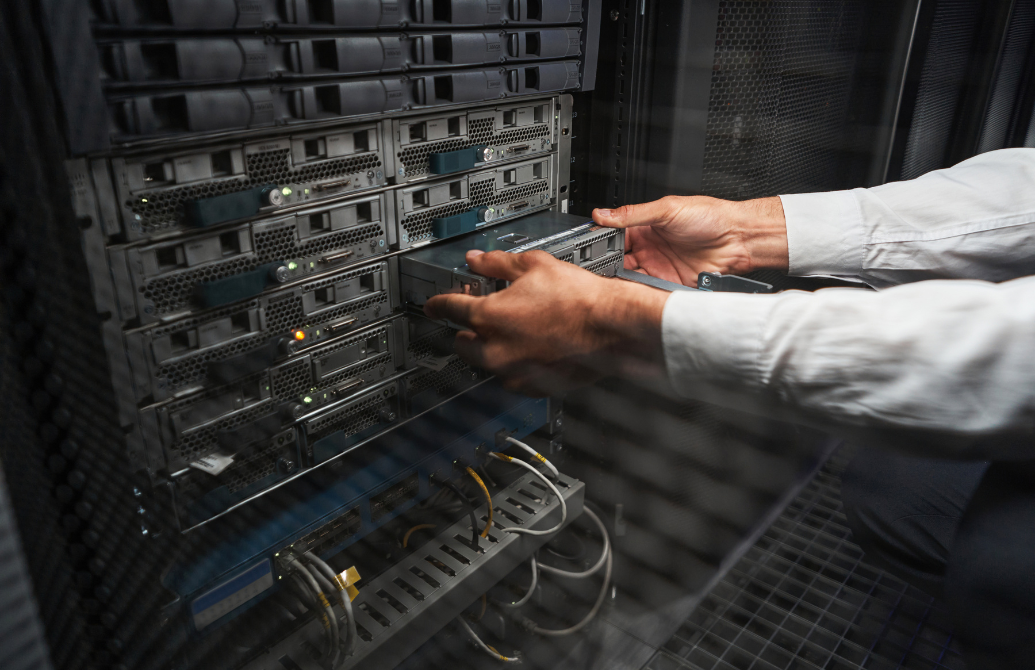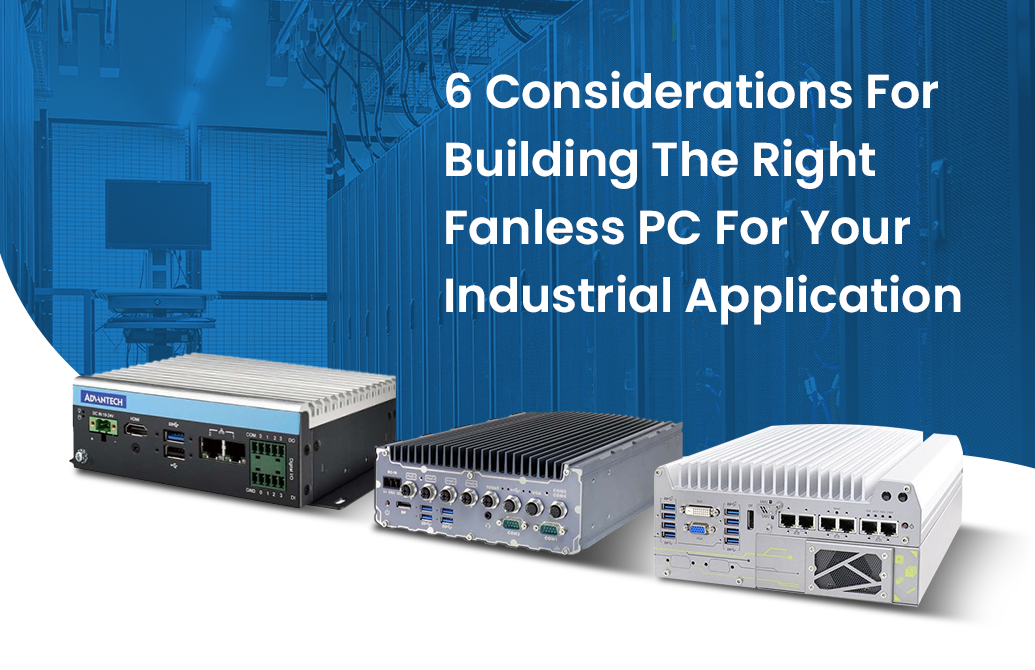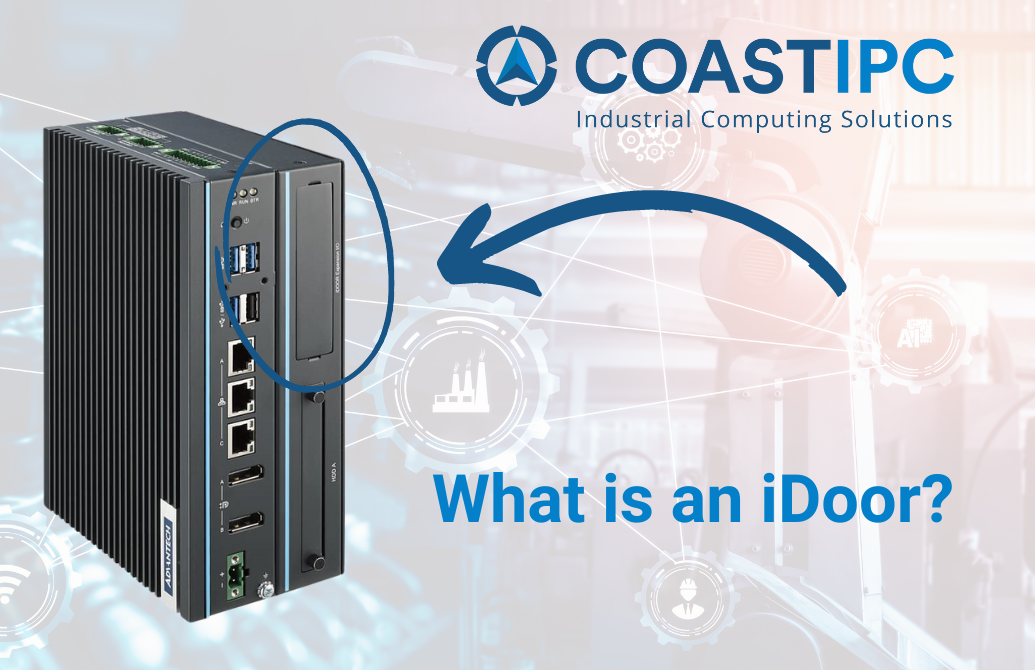
When it comes to industrial PCs, there are many different components to choose from. So, how do you know which ones to select for your specific application? This blog post will discuss the top ten key factors you need to consider when selecting components for an industrial PC, from storage and processing power considerations to memory requirements input/output needs.
1. How much processing power do I need for my industrial computer?
At a basic level, there are two key considerations when evaluating processing power requirements for your industrial computer: the processing speed of the central processor in the system and its architecture. Higher-performance processors generally have higher speeds and multiple core and thread options, making them ideal for handling complex applications with heavy computational demands.
When determining the amount of processing power you need, it is crucial to consider the types of applications you will be running on the system. Some applications, such as real-time data acquisition or image processing, are more computationally demanding than others. Most applications and custom modifications run on platforms designed for Windows and Linux. New platforms, specifically Jetson from NVIDIA, consume less power with a specific focus like video processing or inference.
Need a boost? Sometimes the graphics processing of a CPU package is inadequate for display, or the CPU needs more horsepower to process large amounts of data. Consider adding a GPU (graphics processing unit) to share the burden and speed up your work in these cases.
2. How much memory will I need?
When it comes to determining memory needs for your application, the best practice is to use your existing computer as a benchmark. The rule of thumb is to add at least 25% more memory in an upgrade. Check the requirements of your software and slightly over-spec based on that metric.
Dual channel memory can sometimes assist in situations where a single channel isn’t readily available—for example, two 16GB modules instead of a single 32GB module. Error-correcting code (ECC) is also an option for specific mission-critical applications and can be available through special request.
3. How much storage?
The next consideration is the storage your industrial computer needs. Use your current PC as a baseline, with a minimum of 64GB in storage capacity to begin. In addition, most modern SSDs are rated to accommodate rewrites without degradation.
Types of storage to consider:
- HDD: Hard disk drive. Not recommended. These aren’t typically suitable for industrial PCs, especially fanless models, unless the installation environment is exceptionally mild. They cost less, but moving parts make them vulnerable to damage and a short life-span.
- SATA SSD: A SATA solid state drive is faster than HDD but requires cabling.
- mSATA SSD: A mini SATA performs similarly to SATA but comes in a smaller package. They require no cables but have a more limited capacity.
- M.2 SSD: Faster and smaller than SATA SSD and does not require cables. However, it does not have NVMe support.
- PCIe M.2 SSD: Unlike standard M.2, this version supports NVMe.
- NVMe protocol SSD: Uses higher speed PCIe bus to transmit faster.
4. What are my input/output needs?
Industrial PC I/O needs are driven by data and analytics needs, network needs, and new tech integrations. Here are the needs we see most frequently:
- LAN/GbE: A local area network port or ethernet port. Connectivity has a wide range. GbE denotes a LAN port that supports at least one Gbps.
- PoE: Power over Ethernet. PoE also provides power in addition to data transmission for peripherals without a power source at their location. (certain camera types need PoE)
- HDMI/DP: Most common high-res video connection. Both support audio and high-speed video resolution and work well with video feeds.
- VGA/DVI: Legacy connections may require these types of ports to continue using existing display equipment.
- COM port/serial port/RS232 port/IOIOI port: Slower than USB for data transfer but offers a dedicated interface.
- DIO: General purpose input/output with logic signal. It detects two possible values (off and on, for example) and works well with limit switches, motion sensors, switch contacts, and status indicators.
- USB Type A and C: Universal Serial Bus is the most recognizable type of connection. The USB form factor is the shape (Type A or Type C, for example), while the performance is measured in numbers (3.1, 3.2, and thunderbolt 4)
5. What data connections do I need?
Industry 4.0 is a growing trend in the manufacturing, automation, and networking industries, as businesses invest in digital technology and connectivity solutions to transform their operations for the future.
When choosing a wireless network solution for your industrial PC or IoT deployment, there are several key factors to consider. Some connection options include:
- Wired ethernet: Cabling can prevent interference and offer low latency/high bandwidth transmission. However, it adds bulk and logistics challenges.
- WiFi: Also offers low latency/high bandwidth transmission but without wiring logistics. However, it can fall prey to interference or low power challenges.
- Cellular: Offers excellent protection against downtime and can be customized for better security than WiFi. However, it can have latency and bandwidth challenges.
- LoRa/LoRaWAN: Shines in low-power scenarios and offers transparent layer security. However, there’s no uniform, global frequency solution.
6. How do I choose the right temperature range?
Each component of an industrial PC has an operating temperature, and many parts also generate their own heat. A case design can make or break temperature requirements since well-designed case elements can dissipate the heat generated by the hardware components. Otherwise, high temperatures can interfere with the PC’s consistent performance.
- Standard temperature range is typically 0 degrees to 50 degrees Celsius
- Extended temperature range is typically around -40 degrees to 70 degrees Celsius
- In some cases Standard temp is considered -20 to 70 and Wide temp -40 to 85
When determining the temperature range, consider full utilization measurements or the temperature when the computer is pushed to its maximum. Consider case design, where the installation will be (enclosures, ventilation, and ambient temperature), wide-temp component options, and the resource draw of software applications.
7. What power sources do I have?
Clean power is one of the most important considerations. The most common power source is DC, and direct wiring DC power guards against failure. Check the technical spec sheet for your potential PC to determine your power needs. In addition, ensure that those power sources are suitable for your installation location, including space to install while leaving room for the power connection.
8. What form factor fits my installation location?
Technical specs will list the physical requirements for the chosen system. When choosing a form factor, consider:
The physical constraints of your installation location: A shoebox form factor takes up less space, for example, but creates temperature constraints. A server rack can hold large equipment but requires special mounting hardware.
The environmental constraints of your installation location—air particulates, liquid, extreme temperatures, etc.: A fanless form factor, for example, can prevent dust contamination.
In addition, an IP rating will help determine how dust or liquid proof your PC is. The first digit denotes protection against solids, while the second denotes protection against liquids. For example, IP65 is dust tight and protected against standard water jets, while IP67 is also dust tight but protected from short periods of immersion in water.
9. What mounting hardware will I need?
IPCs don’t just sit on a desk. Mounting hardware is designed for challenging installations and includes these typical choices:
- VESA: Flat display mounting suitable for monitors and other display equipment.
- DIN Rail: Metal railing is often used for industrial equipment inside equipment racks.
- Wall mounting brackets: Attaches to the bottom of the PC (not for use with those intended for vertical DIN Rail mounts). Also works well as a table top mount.
- Rackmount: Typically used to mount servers, but increasingly popular way of mounting single or multiple fanless computers.
10. What is the difference between lifespan and mean time before failure?
Lifespan for industrial PCs means the length of time a manufacturer is committed to selling and actively supporting the product. The “mean time before failure” measures the “mean” time a computer can be used before it fails.
Lifespan influences the overall cost of the computer and not just replacement value. Replacing or upgrading components can add heavily to operational costs, such as recertification.
Choosing the right Industrial PC with help from experts
There are so many variables when it comes to selecting a suitable industrial PC. Talking with an expert at CoastIPC can help you navigate the choppy waters of component selection and product availability. Need help choosing the right solution for your project? Contact CoastIPC today to find the right industrial PC for your next project.



